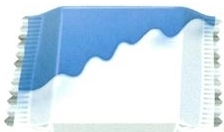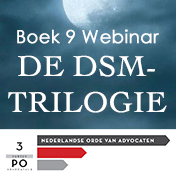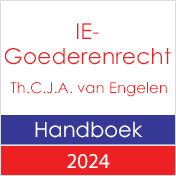Rechtspraak onderscheidend vermogen 3d-merken van toepassing op merken bestaande uit tweedimensionale representaties product
08-05-2017 Print this page Rechtspraak met betrekking tot het onderscheidend vermogen van driedimensionale merken met het uiterlijk van het betrokken product ook van toepassing bij beeldmerken die bestaan uit tweedimensionale representaties van het product. Gerecht EU mocht oordelen dat het betrokken beeldmerk geen onderscheidend vermogen heeft.
Rechtspraak met betrekking tot het onderscheidend vermogen van driedimensionale merken met het uiterlijk van het betrokken product ook van toepassing bij beeldmerken die bestaan uit tweedimensionale representaties van het product. Gerecht EU mocht oordelen dat het betrokken beeldmerk geen onderscheidend vermogen heeft.
Beroep tegen uitspraak van het GEU (IEPT20160510), waarin het verzoek om het betrokken beeldmerk (zie afbeelding) in te schrijven voor waren van klasse 30 (o.a. chocola en ijs) werd afgewezen. Het beroep wordt verworpen.
Het Hof van Justitie EU overweegt dat de rechtspraak met betrekking tot het onderscheidend vermogen van driedimensionale merken met het uiterlijk van het betrokken product ook van toepassing is bij beeldmerken die bestaan uit tweedimensionale representaties van het product en dat het Gerecht deze rechtspraak in casu mocht toepassen. Het Gerecht mocht verder oordelen dat het beeldmerk geen onderscheidend vermogen bezit.
42 In that regard, the General Court found, in paragraphs 49 and 51 of the judgment under appeal, that (i) the different colours are commonplace, such that they will be perceived by the relevant public only as being aesthetic or presentational elements, (ii) the interpretation that the figurative element in question represents a snow-covered mountain and a blue sky is not obvious to the relevant consumer, (iii) it is well known that such a pattern and a blue sky frequently appear on the packaging of products such as the goods concerned, (iv) as regards the colours used, the white part could also bring to mind milk, an ingredient commonly used in chocolates and ice-creams, which is often represented on the packaging of chocolates, and (v) the addition of an image naturally comes to mind, given that the consumer is used to the fact that coloured elements are present on the packaging of products such as the goods concerned. It is on the basis of those considerations that the General Court concluded, also in paragraph 51, that the image affixed to the mark applied for and the grey edges of the packaging were not such as to confer a distinctive character on that mark and that those elements were likely to be seen by consumers as mere decorative patterns and not as an indication of origin.
43 Consequently, as is apparent from paragraphs of 37 to 40 above, the General Court was entitled to find that the mark applied for was devoid of any distinctive character, such an assessment in relation to a two-dimensional mark containing a figurative element not being based, contrary to what Storck claims, on criteria not laid down in the case-law of the Court of Justice or too strict in relation to that case-law. It follows that the first part of the first ground of appeal must be rejected as unfounded.
IPPT20170504, ECJ, August Storck v EUIPO


























































